This paper p r e s e n t s a l o o k t o t h e phenomenon of acculturation (Berry, 05) in the processes of formal music education, as an interest to document theAnimated Video created using Animaker https//wwwanimakercom Useful animation of Berry's model of acculturation as well as reference to his study QuickBerry's Model of Acculturation Berry's Model of Acculturation, also known as Berry's Fourfold Model, is something that can be used for Cross Cultural Teams, despite not being created for Cross Cultural Teams It consist of four separate boxes * Assimilation – Where someone from a different culture adopts the cultural norm of the
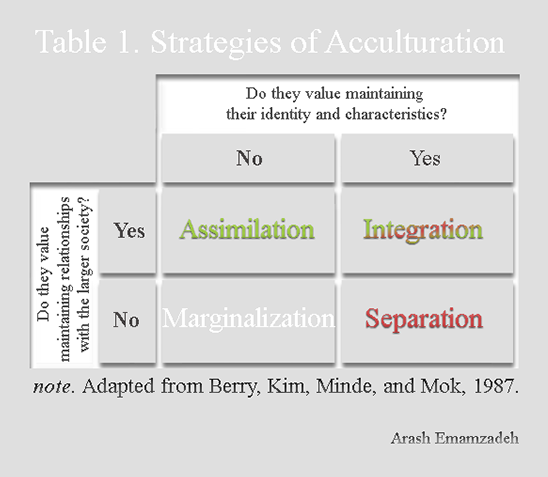
Acculturation And Migration Interview With Dr J W Berry Psychology Today United Kingdom
Berry acculturation model
Berry acculturation model-However contemporary research has primarily focused on different strategies and how acculturation affects individuals, as well as Testing Berry's model of acculturation A confirmatory latent class approach Cultural Diversity and Ethnic Minority Psychology, 14, 275–285 7 Stonequist, E V (1937) The Marginal Man A




Immigrant Acculturation And Wellbeing In Canada
Berry's Acculturation model a theory that examines individuals attitudes and behavior when being exposed to another culture in order to fit in to the culture, not only does the person has to be open to the culture, but the culture needs to be accepting too479 downloads Abstract Based on Berry's (1987) framework on acculturation and ethnic identity interaction, this study examined the link from this interaction among Asian Americans to their political participation Using the 08 National Asian American Survey (Study 1) and a selfinitiated survey among Chinese students in Fall 14 (Study 2Berry, JW (1980) Acculturation as varieties of adaptation In Padilla, A, Ed, Acculturation Theory, Models and Findings, Westview, Boulder, 925
21 Berry's (1980) Working Model of Acculturation Attitudes Berry (1980) developed an acculturation attitudes model in which the different ways that people acculturate is outlined This model involves two major issues the extent to which people tend to maintain their original culture Testing Berry's model of acculturation A confirmatory latent class approach Cultural Diversity and Ethnic Minority Psychology, 14, 275–285 7 Stonequist, E V (1937) The Marginal Man ABerry's Model of Acculturation Assimilationist Separationist Marginalist Integrationist LaFromboise, Coleman, & Gerron (1993) Models of Acculturation Assimilationabsorption into the dominant culture Acculturationcompetence in a second culture without complete acceptance Fusiona combination of cultures to form a new culture
Going beyond critique, suggest that attention be paid to the intricacies of identity processes in multicultural contexts in order toBehaviors and mental health The model we propose, builds on and combines elements from three different models of acculturation (1) Berry's bidimensional model of acculturation 17, (2) the Multidimensional Individual Differences Acculturation model 14, and (3) Rudmin's 16 acculturative learning model 11A) Explain Berry's acculturation model and apply the model to an aspect of your identity or experiences You can also relate this to concepts from the Lyubansky Reminder key is to highlight full understanding of theory and research – this should be majority of essay B) Provide a critique, evaluation, or extension of Chua's and Li's



Acculturation




Domains Of Identity Adolescent Psychology
Acculturation is the process of cultural and behavioral change resulting from contact between groups and individuals from different cultural backgroundsAcculturation strategies refer to the varying pathways people take when adapting to a new or unfamiliar culture Canadian psychologist John Berry identified four primary acculturation strategies that emergeBerry's Theory Of Acculturation 1486 Words6 Pages Early studies which go back to 1930s, basically focus on the socioanthropological aspect of the issue as parallel with the definition above In those studies, researchers are mainly concerned with the nature of the adaptation processes of a particular ethnic community contacting with aShareable Link Use the link below to share a fulltext version of this article with your friends and colleagues Learn more




Culture And Its Influence On Individual Ib Psychology



Acculturation
Human origins have been debated by evolutionists and creationists Christian young adults are educated first on creationism and learn of evolution later This delayed education of evolution leads to potential belief change and stress This belief change process may be similar to Berry's acculturation After belief change, individuals may exhibit belief bias during human origin 4 Basic Acculturation Strategies 1 Assimilation 2 Separation 3 Integration 4 Marginalization The Theory Meet Mimi Acculturation "cultural modification of an individual, group, or people by adapting to borrowing traits from another culture" Fourfold model Two dimensionsHowever, researchers frequently attempt to study this model by utilizing continuous measures of acculturation and deriving Berry's four categories based on obtained results, or by splitting obtained scores at the median (Schwartz & Zamboanga, 08;



Topic Five Acculturation



2
JW Berry, in Encyclopedia of Applied Psychology, 04 1 Acculturation Concept The initial interest in acculturation grew out of a concern for the effects of European domination of colonial and indigenous peoples Later, it focused on how immigrants (both voluntary and involuntary) changed following their entry and settlement into receiving societiesTesting Berry's model of acculturation a confirmatory latent class approach The authors examined the extent to which Berry's (1997) acculturation orientation categoriesassimilation, integration, separation, and marginalizationwould emerge from a latent class analysis of continuous acculturation indices Hispanic college students (N = 436Acculturation and Adaptation Among Immigrants and Refugees John W Berry, professor emeritus in the department of psychology at Queen's University in Kingston, Ontario, discussed his research concerning the social, psychological and academic adaptation of immigrants in a new culture He spoke at Hamilton on April 14




Acculturation Coping And Integration Success Of International Skilled Migrants An Integrative Review And Multilevel Framework Hajro 19 Human Resource Management Journal Wiley Online Library
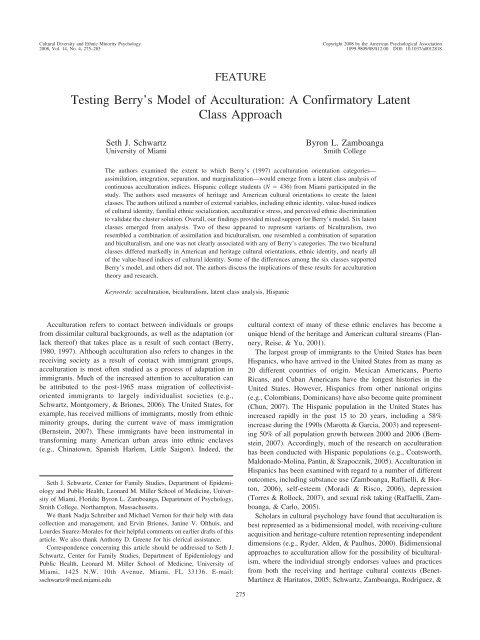



Testing Berry S Model Of Acculturation American Psychological
John W Berry, Corresponding Author Queen's University, Ontario, Canada The longterm psychological consequences of this process of acculturation are highly variable, depending on social and personal variables that reside in the society of origin, the society of settlement and phenomena that both exist prior to, and arise during, theAcculturation is a process of social, psychological, and cultural change that stems from the balancing of two cultures while adapting to the prevailing culture of the society Acculturation is a process in which an individual adopts, acquires and adjusts to a new cultural environment as a result of being placed into a new culture, or when another culture is brought to youThat is, according to Berry's (1980) model, and other similar approaches, the same two acculturation processes, and the same four acculturation categories, characterize all migrants equally—regardless of the type of migrant, the countries of origin and settlement, and the ethnic group in question (Berry et al, 06)




Acculturation Language Acquisition Theories Psychology Department Psychology
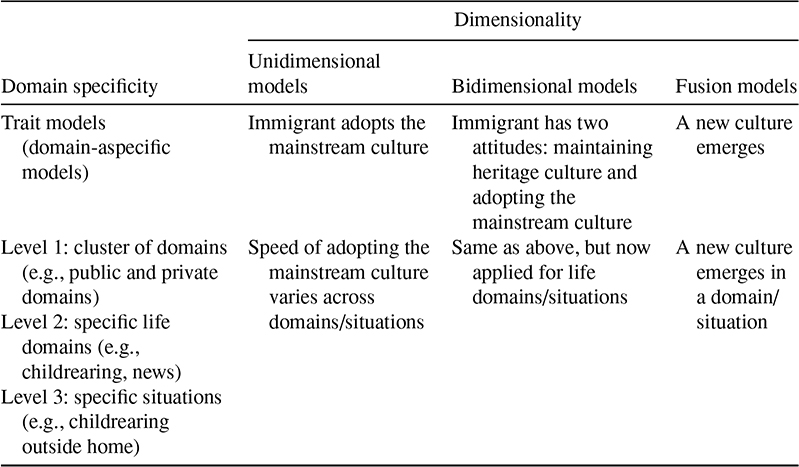



Assessment Of Psychological Acculturation Chapter 10 The Cambridge Handbook Of Acculturation Psychology
The theoretical backbone of this research draws upon UmañaTaylor et al's (04, 14) ethnic identity development model and Berry's (1997, 01, 05) model of acculturation to examineAcculturation is, arguably, one of the most frequently mentioned con structs or concepts in ethnic psychology Indeed, researchers often include some measure of acculturation in their research to analyze differences within ethnic groups and to understand the relationship of acculturation to psy chosocial adjustment and health Berry believed that minorities accumulate in different ways One may be a little more afraid to assimilate with the mainstream culture or they may hate both their cultures and the mainstream culture The different ways people accumulate are called Integration, Assimilation, Separation, and Marginalization Integration is when an immigrant is



Towards A Framework For Understanding Ethnic Consumers Acculturation Strategies In A Multicultural Environment A Food Consumption Perspective Emerald Insight




Acculturation And Adaptation Of Immigrant Youth John W Berry Queen S University Kingston Canada Open Lecture Moscow April Ppt Download
1 Berry's model of acculturation choices assumptions reflecting a benign implicit ideologyThe purposes of this paper are to critique aspects of Berry's model of acculturation strategies (a dominant model used in crosscultural research); John Berry's Model of Acculturation Based on two principles Cultural Maintenance the extent individuals value and wish to maintain their cultural identity Contact Participation the extent individuals value and seek out contact with those outside their own group, and wish to participate in the daily life of the larger societyConditions, acculturation orientations, acculturation outcomes, acculturation attitudes, acculturation behaviors, conceptual model and life domains) Scale Descriptors Target group Our overview of the publicly available measures pointed out that 609% are directed to a specific group



2




Context Dependent Ethnic Identity And Its Impact On Product Evaluations A Case Of The Asian Indian Immigrants Acr
Berry's Model of AcculturationBerry's Model of Acculturation, also known as Berry's Fourfold Model, is something that can be used for Cross Cultural Teams, despite not being created for Cross Cultural Teams* Marginalization – When someone rejects both their original culture and the cultural norm (Cohen, 11, 11)The authors examined the extent to which Berry's (1997) acculturation orientation categoriesassimilation, integration, separation, and marginalizationwould emerge from a latent class analysis of continuous acculturation indices Hispanic college students (NIndividuals adapt to a new culture, a process referred to in the literature as acculturation, with Berry's (1980) bidirectional model the most widely referred to and used (Berry, 1995) The acculturation mode is identified as an individual's level of desired contact with the host culture as well as the home culture




Berry S Model Of Acculturation Working In A Cross Cultural Team Berry S Model Of Acculturation




The Two Dimensional Acculturation Model Of Berry Download Scientific Diagram
Berry's Model of Acculturation Berry's Model of Acculturation, also known as Berry's Fourfold Model, is something that can be used for Cross Cultural Teams, despite not being created for Cross Cultural Teams * Marginalization – When someone rejects both their original culture and the cultural norm (Cohen, 11, 11) Berry's Model of Acculturation Culture shock and the stages of culture shock are part of the acculturation process Scholars in different disciplines have developed more than 100 different theories of acculturation (Rudiman, 03);JW Berry's (1980, 03) model of acculturation strategies is used as a framework for understanding ethical acculturation, a developmental process during which students can use several types of adaptation strategies Students enter training with their own moral value traditions and concepts but are confronted with new ethical principles and




Pdf Intercultural Relations And Acculturation In The Pacific Region Semantic Scholar




1 Acculturation Theory Berry S Model Of Acculturation Communication Theory Study Related Communication
Acculturation and Language Acquisition A Look at Schumann's Acculturation Model Jacob Chizzo Islamic Saudi Academy Alexandria, Virginia Submitted Abstract This is a brief overview of the Acculturation Model designed by Schumann (1978) After a short explanation of the model itself, I will look at criticisms by prominentOf acculturation to include varieties of adaptation and specifically identified the following four assimilation, integration, rejection, and deculturation The importance of Berry's model was that it recognized the importance of multicultural societies, minority individuals andAcculturation is the process of group and individual changes in culture and behaviour that result from intercultural contact These changes have been taking place forever, and continue at an increasing pace as more and more peoples of different cultures move, meet and interact




Advancing Acculturation Theory And Research The Acculturation Process In Its Ecological Context Sciencedirect




Theories Concepts And Methods Part I The Cambridge Handbook Of Acculturation Psychology
Berry Acculturation Model for Minorities INTEGRATION ASSIMILATION, SEPARATION MARGINALIZATION ASSIMILATION a group does not maintain its cultural distinctiveness and moves increasingly toward participation with the larger society Relinquishing one's cultural identity and moving into the larger societyAcculturation IB PSYCH MattersAcculturation is the process of social and psychological adjustment that takes place when two different cultures meet Acculturation is experienced by immigrants, refugees or anybody taking an extended stay in a foreign country Berry (05) proposed that people experiencing acculturation behave in one of four ways 1



Acculturation Theory Marketing Stephan Dahl



2
Adjusting to a new culture is challenging Berry's 4 acculturation strategies are assimilation, separation, marginalization and integration (bicultural)Schumann's Acculturation Model Variability Summary C Stefinee E Pinnegar & Annela Teemant Some learners make rapid progress in learning a second language, while others with the same initial ability and language instruction make little progress in the same amount of time Schumann hypothesized that this difference could be accounted for by This chapter reviews the core meanings of the process of acculturation and its consequences for groups and individuals At the cultural group level, acculturation involves changes in social structures and institutions and in cultural norms At the individual psychological level, it involves changes in people's behavioral repertoires and their eventual adaptation to




Rethinking The Concept Of Acculturation Implications For Theory And Research Abstract Europe Pmc




Berry S Model Of Acculturation Diagram Quizlet
Giang & Wittig, 06) Such approaches are misleading because they assume the presence and




Testing A Modified Interactive Acculturation Model In Japan American Japanese Coworker Relations Sciencedirect
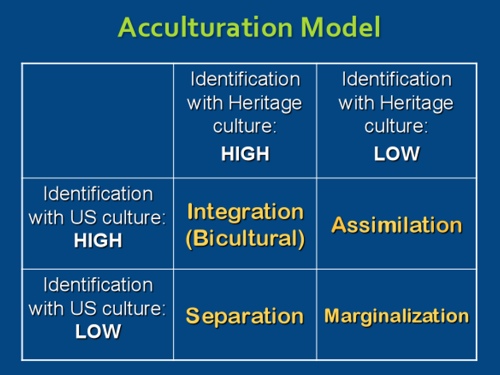



Acculturation 4 Ways To Adjust To A New Culture Hoai Thu Truong




流されないように Acculturation Banga




Pdf A Critique Of Critical Acculturation




Acculturation The Cultural Dimension Of Technology
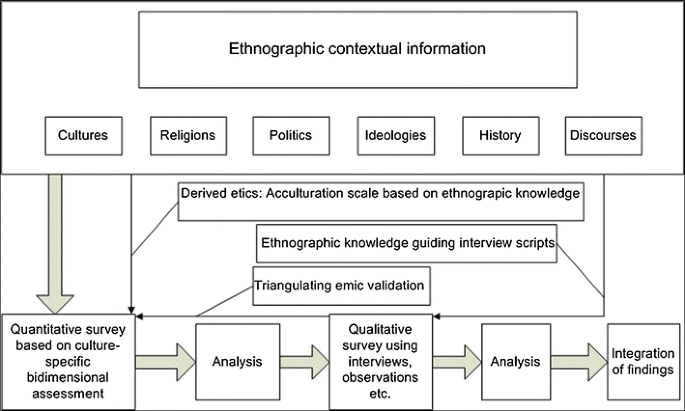



Theories And Methodologies In Acculturation Psychology The Emergence Of A Scientific Revolution Springerlink




Hispanic Acculturation Processes Evidence Against Assimilation Acr




Understanding Cross Cultural Adjustment And Acculturation Theories
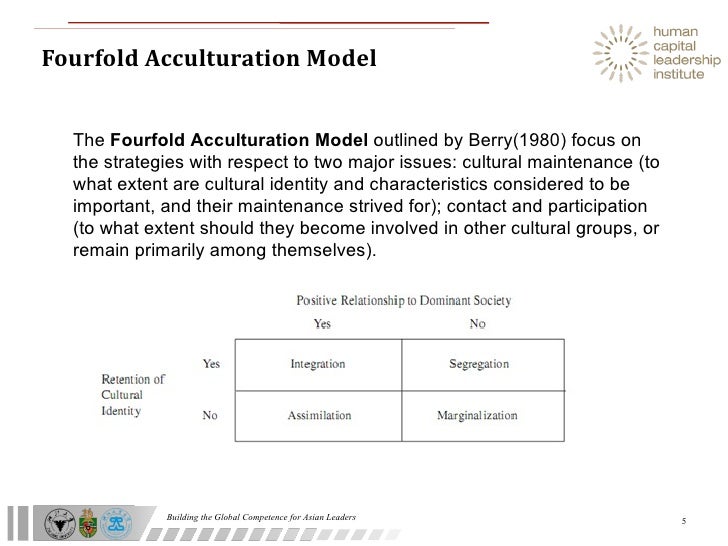



Acculturation Perspective Of Global Leadership



Cartoon




Sociocultural Approach Acculturation Flashcards Quizlet




Pdf Lead Article Immigration Acculturation And Adaptation Semantic Scholar




Berry S Model Of Acculturation Cultural Identity Study Materials Psychology
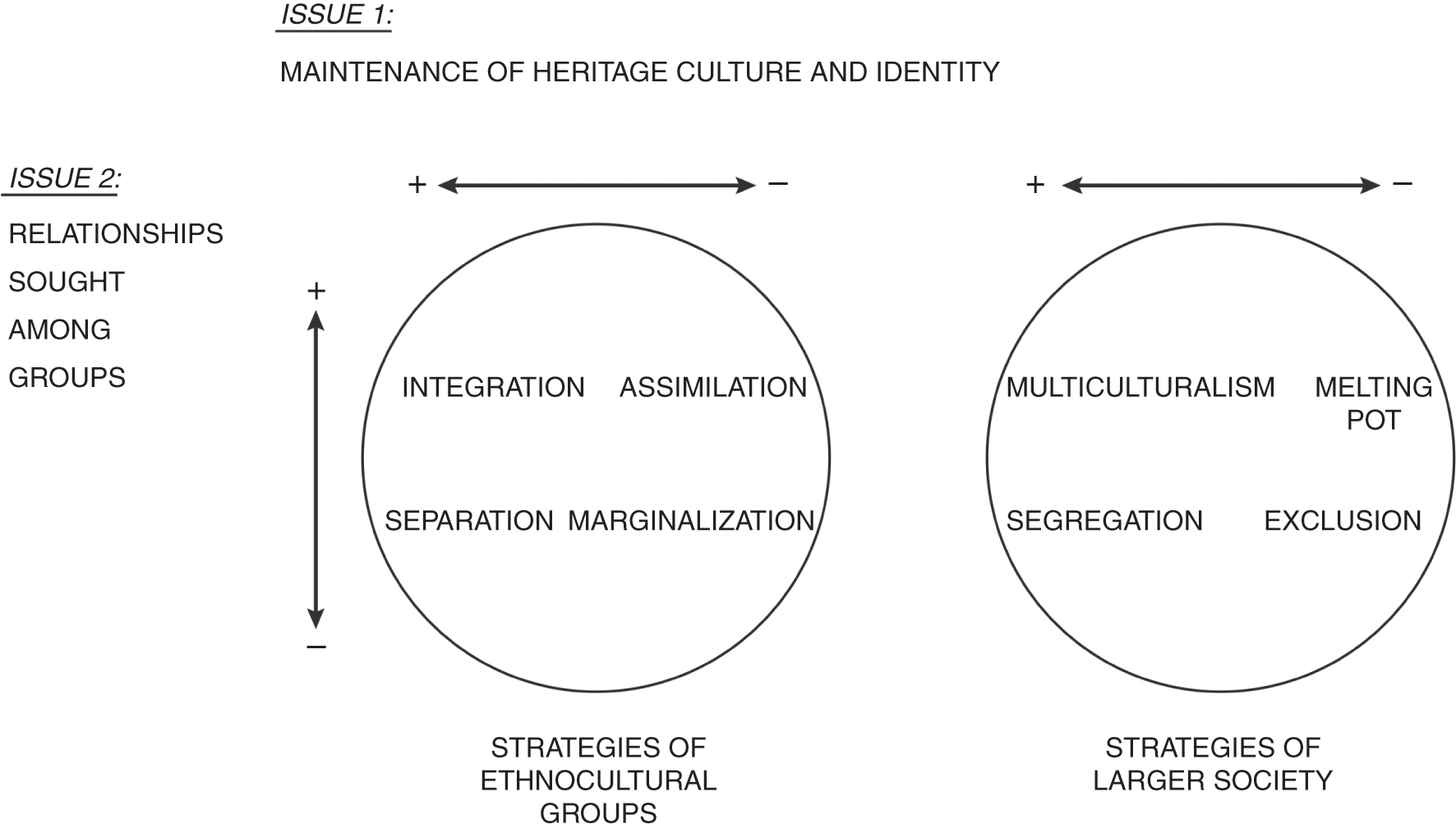



Acculturation
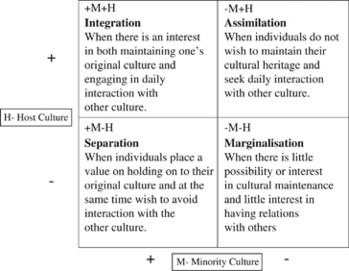



Exploring The Role Of Acculturation In Brand Choice A New Perspective For Targeting Indians Living In The United Kingdom Springerlink




Acculturation Framework Source Berry And Sam 1997 Download Scientific Diagram
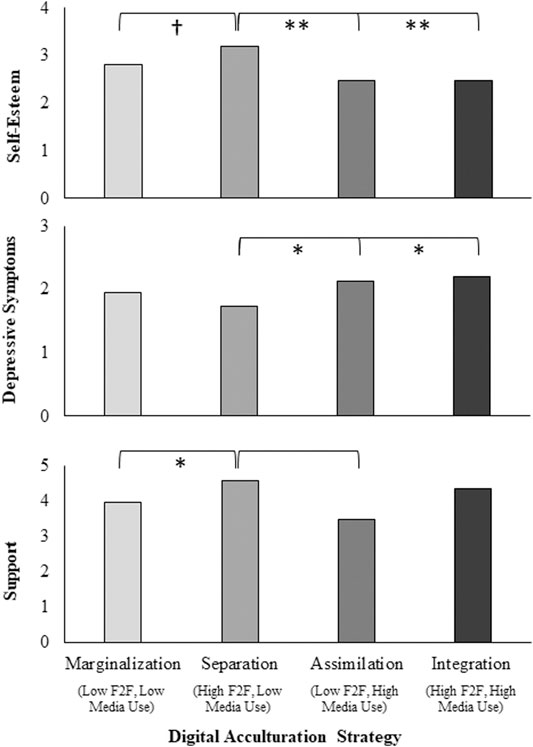



Frontiers Digital Acculturation Or Displacement Examining The Link Between Social Media And Well Being Human Dynamics




Sage Books Applied Cross Cultural Psychology
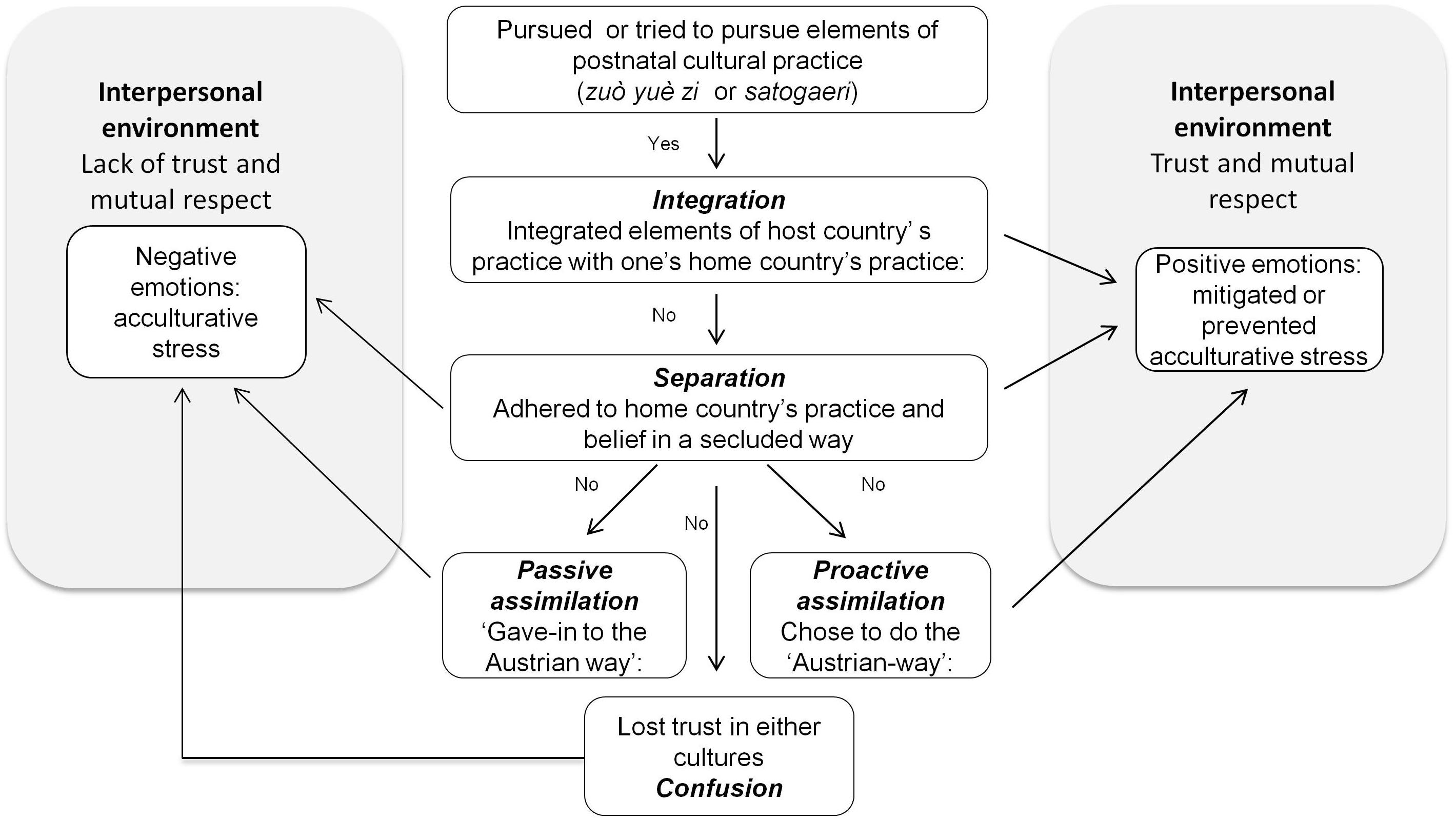



Frontiers No Austrian Mother Does This To Sleep Without A Baby Postnatal Acculturative Stress And Doing The Month Among East Asian Women In Austria Revisiting Acculturation Theories From A Qualitative Perspective




11 According To Berry S Model Of Acculturation If Someone Believes It Important To Maintain Their Own Homeworklib
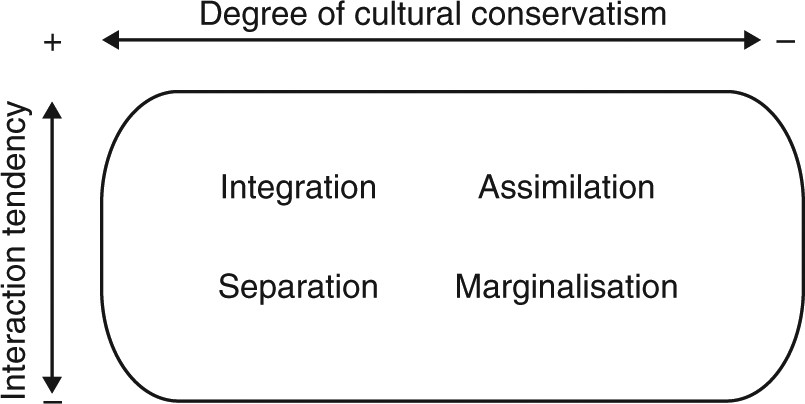



Acculturation Orientations Affect The Evolution Of A Multicultural Society Nature Communications




Tourists Strategies An Acculturation Approach Sciencedirect




Cfs 4 Midterm Diagram Quizlet




Acculturation Living Successfully In Two Cultures Sciencedirect



2




Figure 2 The Impact Of Acculturation On Immigrants Business Ethics Attitudes Springerlink




Acculturation Styles Adapted From Berry 1997 Download Scientific Diagram
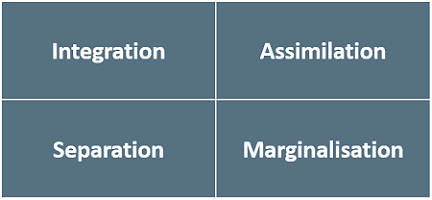



To Acculturate Or Not To Acculturate Culture Resource Centre




Pdf Acculturation Model For L2 Acquisition Review And Evaluation Hamed Barjesteh Academia Edu
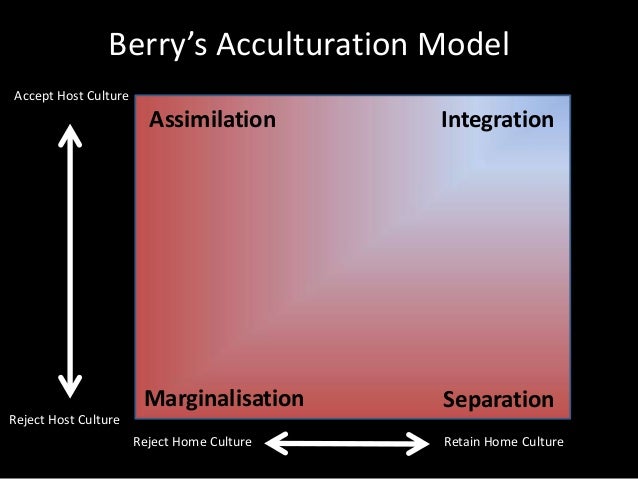



Understanding Cross Cultural Adjustment And Acculturation Theories



2




Assessment Of Psychological Acculturation Chapter 10 The Cambridge Handbook Of Acculturation Psychology




Berry S Model Of Acculturation Psychology Youtube




Acculturation Living Successfully In Two Cultures Sciencedirect




Acculturation And Migration Interview With Dr J W Berry Psychology Today United Kingdom



Assimilation Or Integration Similarities And Differences Between Acculturation Attitudes Of Migrants From Central Asia And Russians In Central Russia Psychology In Russia State Of The Art




Xixth International Congress Of The International Association For




Berry S Acculturation Model Source Berry 01 P 618 Download Scientific Diagram




Acculturation




Sage Books Applied Cross Cultural Psychology




Testing Berry S Model Of Acculturation A Confirmatory Latent Class Approach Semantic Scholar




Impact Of The Group Of Co Migrants On Strategies Of Acculturation Towards An Expansion Of The Berry Model Cohen 11 International Migration Wiley Online Library




Contexts Ofacculturation Chapter 3 The Cambridge Handbook Of Acculturation Psychology




Immigrant Acculturation And Wellbeing In Canada



1
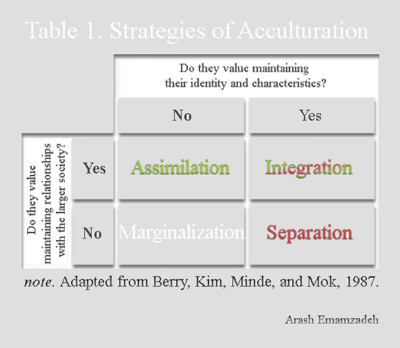



Acculturation




The Two Dimensional Acculturation Model Of Berry Download Scientific Diagram




Relative Acculturation Extended Model Raem New Contributions With Regard To The Study Of Acculturation Sciencedirect




Exploring Migrant Families Acculturation And Livelihoods In Canada And The Role Of Sport Participation Journal Of Sport For Development




Adapted From Berry S Acculturation Model Download Scientific Diagram




Acculturation Definitions And Berry S Model Flashcards Quizlet
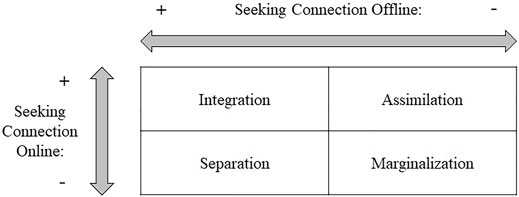



Frontiers Digital Acculturation Or Displacement Examining The Link Between Social Media And Well Being Human Dynamics




Berry S Framework Four Varieties Of Acculturation Download Scientific Diagram




Stress Perspectives On Acculturation Chapter 4 The Cambridge Handbook Of Acculturation Psychology




Sage Books Applied Cross Cultural Psychology



2
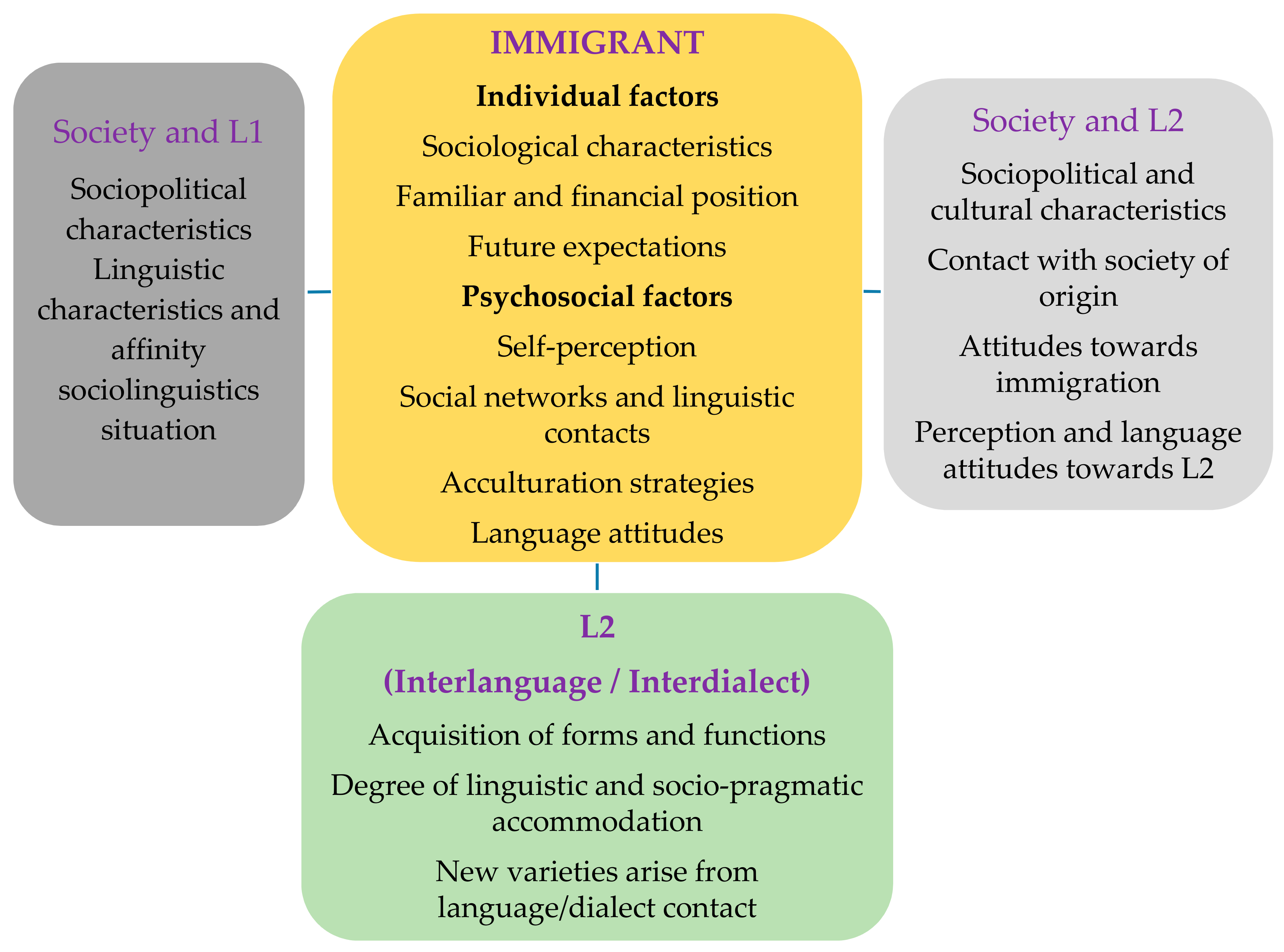



Languages Free Full Text The Sociolinguistic Integration Of Immigrant Populations Reflections On Its Study Html




Testing Berry S Model Of Acculturation A Confirmatory Latent Class Approach Semantic Scholar




The Integrated Acculturation Model Expanding Acculturation To Cultural Identities In Addition To Race And Ethnicity Garcia Journal Of Multicultural Counseling And Development Wiley Online Library




Acculturation An Overview Sciencedirect Topics
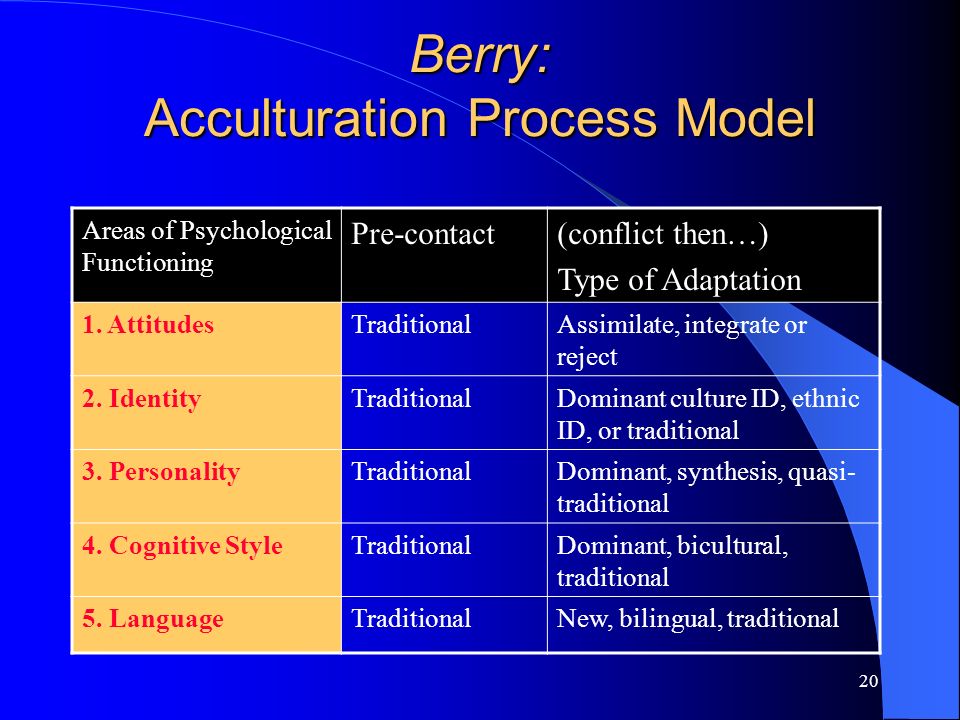



Stages Of Forced Migration And Adaptation To A New Culture Ppt Video Online Download




Berry S Acculturation Model Cultural Maintenance Of Immigrant Or Host Download Table




Are Americans More Successful At Building Intercultural Relations Than Japanese A Comparison And Analysis Of Acculturation Outcomes In Japan Springerplus Full Text



Assimilation Or Integration Similarities And Differences Between Acculturation Attitudes Of Migrants From Central Asia And Russians In Central Russia Psychology In Russia State Of The Art



Integration Experiences Of Newcomers Across The Prairies Untangling Perceived Dichotomy Between Immigrants And New To Towns Document Gale Literature Resource Center




Berry S 1992 Acculturation Model Download Scientific Diagram




Berry S Theory Of Acculturation Youtube



3




Acculturation And Adaptation In A New Society Berry 1992 International Migration Wiley Online Library
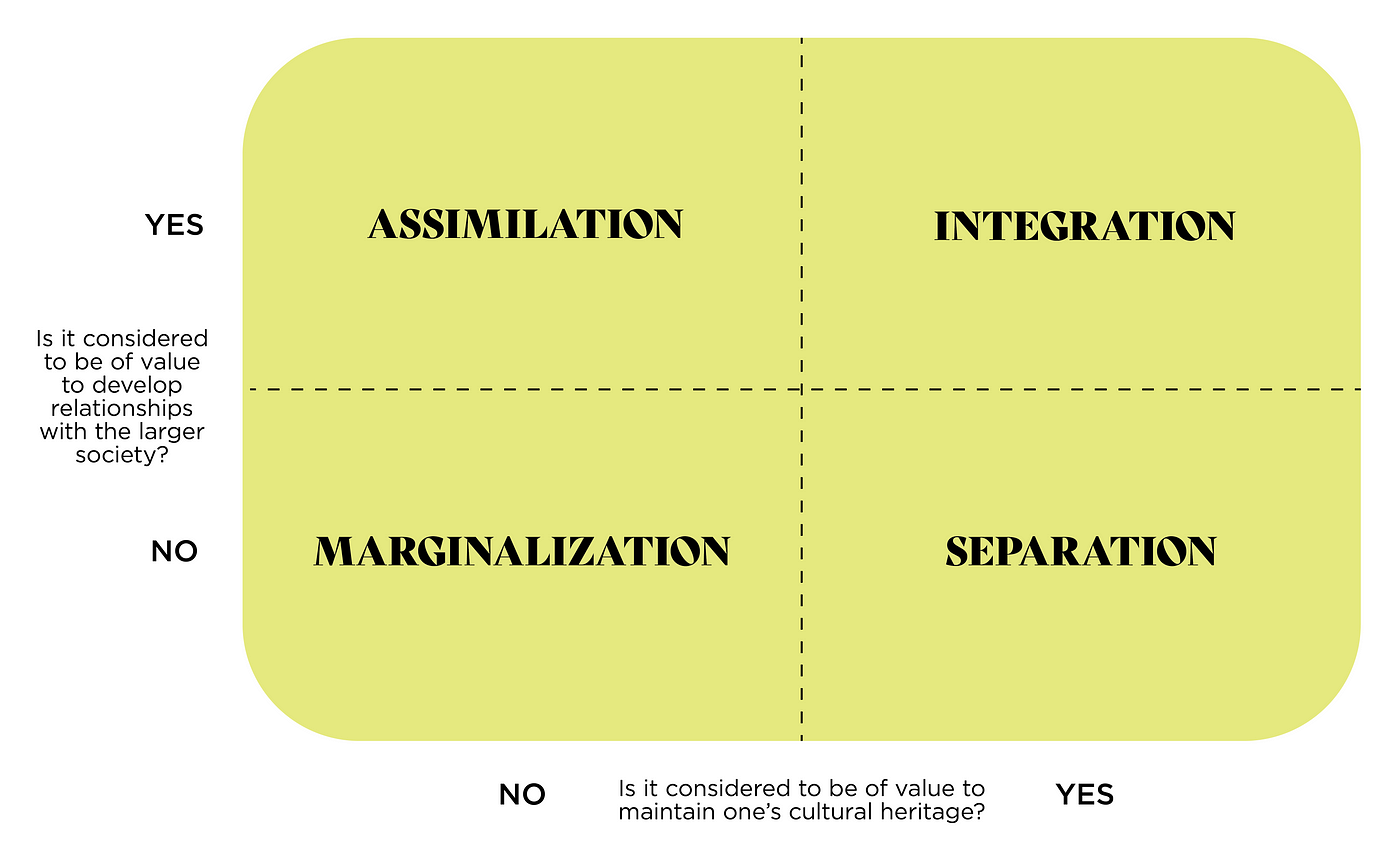



Integrating Translucent Acculturation By Alex Michael Fogleman Medium




Training Ethical Psychologists An Acculturation Model




Thinking Outside The Berry Boxes New Perspectives On Identity Acculturation And Intercultural Relations Sciencedirect



2




Acculturation Wikipedia



2
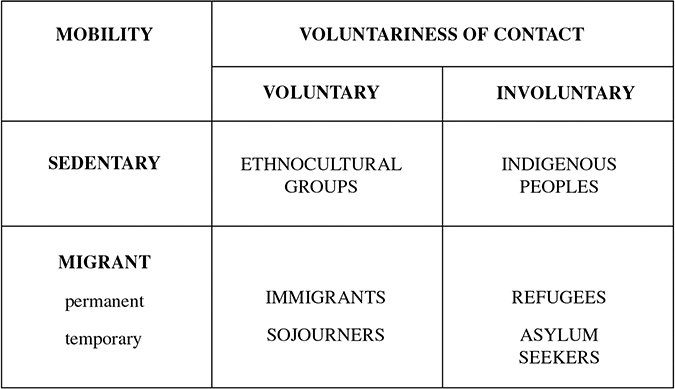



Contexts Ofacculturation Chapter 3 The Cambridge Handbook Of Acculturation Psychology




Berry S Bidirectional Model Of Acculturation Values Maintaining Culture Download Table




Pdf An Empirical Comparison Of Acculturation Models Semantic Scholar



2




Berry S Acculturation Model 4 Download Scientific Diagram



0 件のコメント:
コメントを投稿